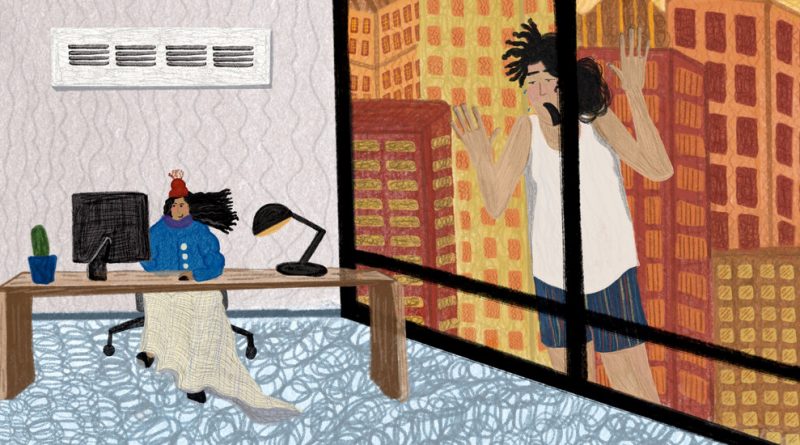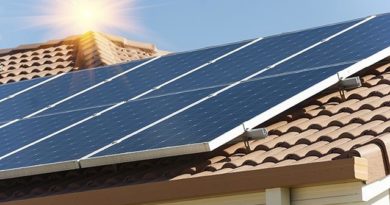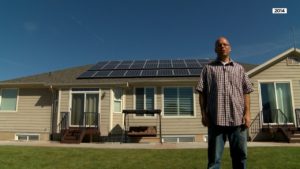Will Work for Air-Conditioning – The New York Times
Energy Disrupter

At first, working from home felt like getting away with something. People rejoiced in taking meetings in sweatpants and squeezing in a load of laundry between calls. Commutes shrank and flexibility expanded. Nobody worried about their lunch being stolen from the communal fridge anymore.
Then, after more than a year of dialing in, the physical office, in all its fluorescence, began to beckon. After a heat wave in the Northeast and triple-digit temperatures in the West, some employees started to wonder if the grass might be greener — or, at least, the cubicle cooler — on the other side.
“I’ve started going into work a few days a week to take advantage of the air-conditioning,” said Courtney Walsh, a librarian at an intellectual property firm in Boston, whose third-floor apartment gets stiflingly hot.
Ms. Walsh, 44, usually waits until July to install her window unit, but this year she cracked in early June, when she realized “clutching the ice packs from my grocery delivery wasn’t a long-term solution.” Still, she said, while her modest A.C. takes the edge off, it’s not as effective (or free) as her office’s central air.
“I have to run it for hours before a meeting, which drives up my utility bill,” she said. “Then it’s so loud while I’m trying to talk that I have to turn it off. So then I’m immediately sweating again.”
Globally, less than a third of households own an air-conditioner, according to a 2018 report from the International Energy Agency. And even in countries like the United States, where almost 90 percent of homes have some kind of A.C., all that cooling doesn’t come cheap.
The U.S. government’s most recent Residential Energy Consumption Survey, completed in 2015, found that Americans spend an average of $265 on air-conditioning annually. (For those in the hot-humid climate zone that stretches from Florida to southeastern Texas, that figure is closer to $525.)
Earlier this year, Michelle Ozuna asked her boss if she could start going back into the office twice a week. While she loves the charm of her studio apartment in Anaheim, Calif., the building has no central air and the windows can barely keep out the heat.
“I’ve got my portable air-conditioner on my left, a fan on my right, and I’m still miserable,” said Ms. Ozuna, 44, who works in human resources for a community college. “I realized I really need to be in the office for my own sanity. I just want to be freezing again.”
Seeking the solace of air-conditioned spaces is nothing new, said Salvatore Basile, the author of “Cool: How Air-Conditioning Changed Everything.” Though New York City’s yellow cabs weren’t required to have A.C. until 1990, the city ran an experiment in the 1950s in which it put a fleet of 50 air-conditioned taxis on the streets, advertising their advantage with a bright blue sticker on the windshield.
“Many drivers reported that a large proportion of their rides came from people who actually didn’t even want to go anywhere,” he said. “They just wanted to be driven around a while to cool off.”
Still, when Willis Carrier — widely regarded as the inventor of modern air-conditioning — installed his “apparatus for treating air” in 1902 in the Brooklyn printing plant where he worked, keeping his fellow employees comfortable wasn’t top of mind.
“The first attempts to cool buildings and factories were made to protect machinery and equipment, not to benefit people,” Mr. Basile said. “The notion of ‘comfort cooling,’ as we know it, was actually a fairly late idea.”
The first high-rise air-conditioned office building in the United States — the 21-story Milam Building in San Antonio — didn’t open until 1928, and even then it was something of an anomaly, Mr. Basile said.
“The idea of installing air-conditioning in an office was expensive, and the ductwork took up a lot of space,” he said. “Workers got nothing from management but awnings free of charge, and it was B.Y.O. electric fans.”
By 1951, the Empire State Building was air-conditioned, and in 1953, the Woolworth Building followed suit — though only in a third of its offices. When the Chrysler Building joined the party in 1954, “it was becoming apparent that A.C. was a must in the modern American office,” Mr. Basile said.
And now, modern American office workers have had that luxury taken away.
“Before Covid, you were usually at work during the dog days of summer, so you didn’t realize how grim it could get at home,” said Eileen Pozniak, a project manager who moved to London from New York 10 years ago.
“Last summer was awful because it was so hot and we couldn’t go in at all,” Ms. Pozniak, 38, said. “Now I plan to go in as much as I can.”
John Tranfaglia, a 29-year-old policy analyst with the University of Michigan Health System, wishes he could do the same. His one wheezing window unit is fighting an uphill battle against the muggy Midwestern summer, but his team but his team can’t go back to the office until the fall.
When he stopped by last month to grab a few things, the temperature hit him immediately. “It was so cold in there,” Mr. Tranfaglia said. “I was so envious.”
While nobody likes sticking to their seat through a meeting, discomfort isn’t the only concern for workers sweating it out from home.
“If I’m shiny and flushed onscreen, I worry I don’t seem as professional,” said Rachel Bowles, a 37-year-old dietitian in Santa Clara, Calif. “It makes me feel like I have less authority.”
Even though her appointments are still virtual, she’s been going into the office just so she can video chat from an air-conditioned space.
“There’s a lot of pressure on women, especially younger women, to look put together in order to be taken seriously,” she said. “If we’re visibly sweaty, we can be perceived as nervous or frazzled.”
Kate O’Berry, a 36-year-old analyst in New Bedford, Mass., also sees the office, and its consistently low temperatures, as a place where she feels most in control.
“In my mind, I have Work Kate and Home Kate,” she said. “And for the last year and a half, I’ve had to be Work Kate at home, with all my messes and interruptions and distractions.” Returning to her air-conditioned office “makes me feel normal,” she said.
Not everyone is excited about having a subsidized place to cool off. A 2015 study revealed that most office buildings set their temperatures based on a formula developed in the 1960s that uses the metabolic rates of men — meaning plenty of employees find it far too cold for comfort.
“I’m not looking forward to the A.C.-induced shivering again,” said Emily Shields, 36, a content designer in Chicago, whose office thermostat is set so low that she’s spent many a summer workday running her hands under the hot water in the bathroom just to get the feeling back.
She and her husband have compromised on the air-conditioning while they both work from home. “I’ve gotten used to being able to work with a blanket on my lap whenever I need, including when I give important presentations,” she said. “I’m sad that that will be going away.”
As for Ms. Walsh, she has already planned her next trip to the office for a brief reprieve from Boston’s humidity. But even she recognizes the double-edged sword of the workplace A.C.
“It’s awful, and it’s the best,” she said. “I’m going back in again in a few days and I can’t wait. I’ll don my office cardigan after an hour or two, and it’ll be bliss.”
Original Source: https://www.nytimes.com/2021/06/21/style/air-conditioning-office.html
















